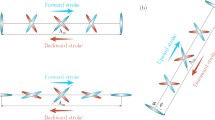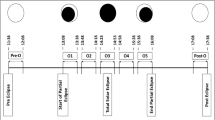Abstract
To gain insight into how temperature affects locomotor performance in insects, the limits of flight performance have been estimated in freely flying fruit flies Drosophila melanogaster by determining the maximum load that a fly could carry following take-off. At a low ambient temperature of 15 °C, muscle mechanical power output matches the minimum power requirements for hovering flight. Aerodynamic force production rises with increasing temperature and eventually saturates at a flight force that is roughly equal to 2.1 times the body mass. Within the two-fold range of different body sizes, maximum flight force production during free flight does not decrease with decreasing body size as suggested by standard aerodynamic theories. Estimations of flight muscle mechanical power output yields a peak performance of 110 W kg−1 muscle tissue for short-burst flight that was measured at an ambient temperature of 30 °C. With respect to the uncertainties in estimating muscle mechanical power during free flight, the estimated values are similar to those that were published for flight under tethered flight conditions.
Similar content being viewed by others
Author information
Authors and Affiliations
Additional information
Accepted: 5 January 1999
Rights and permissions
About this article
Cite this article
Lehmann, FO. Ambient temperature affects free-flight performance in the fruit fly Drosophila melanogaster. J Comp Physiol B 169, 165–171 (1999). https://doi.org/10.1007/s003600050207
Issue Date:
DOI: https://doi.org/10.1007/s003600050207




